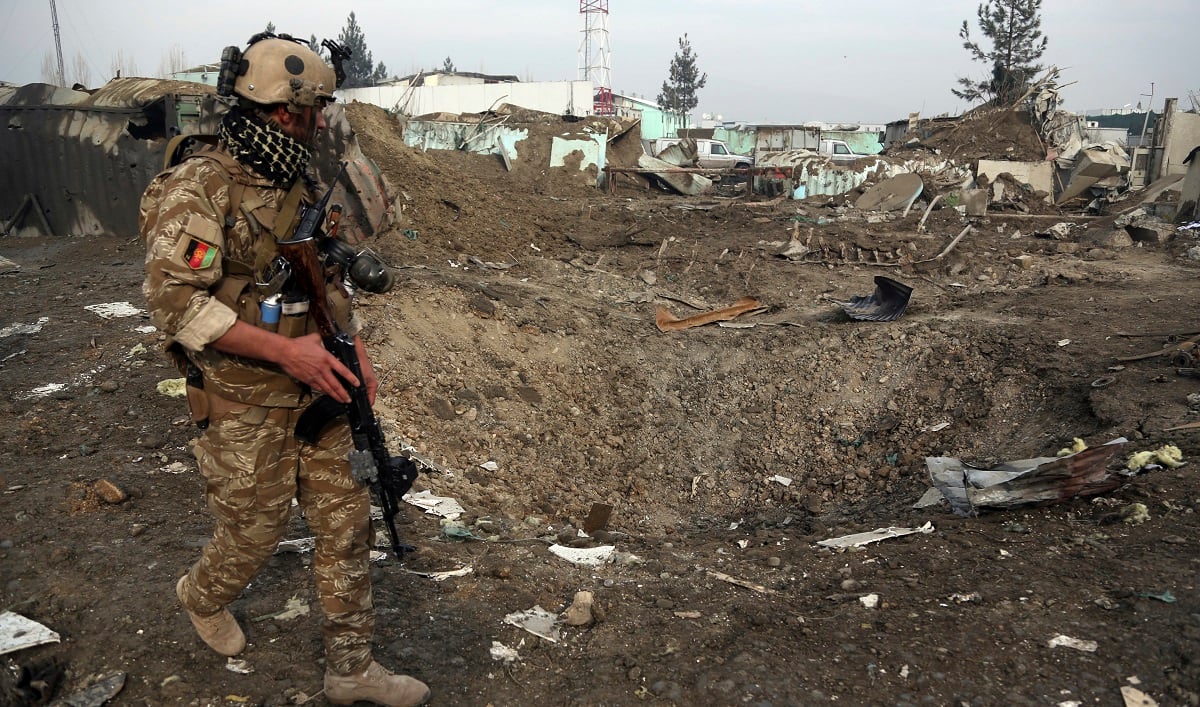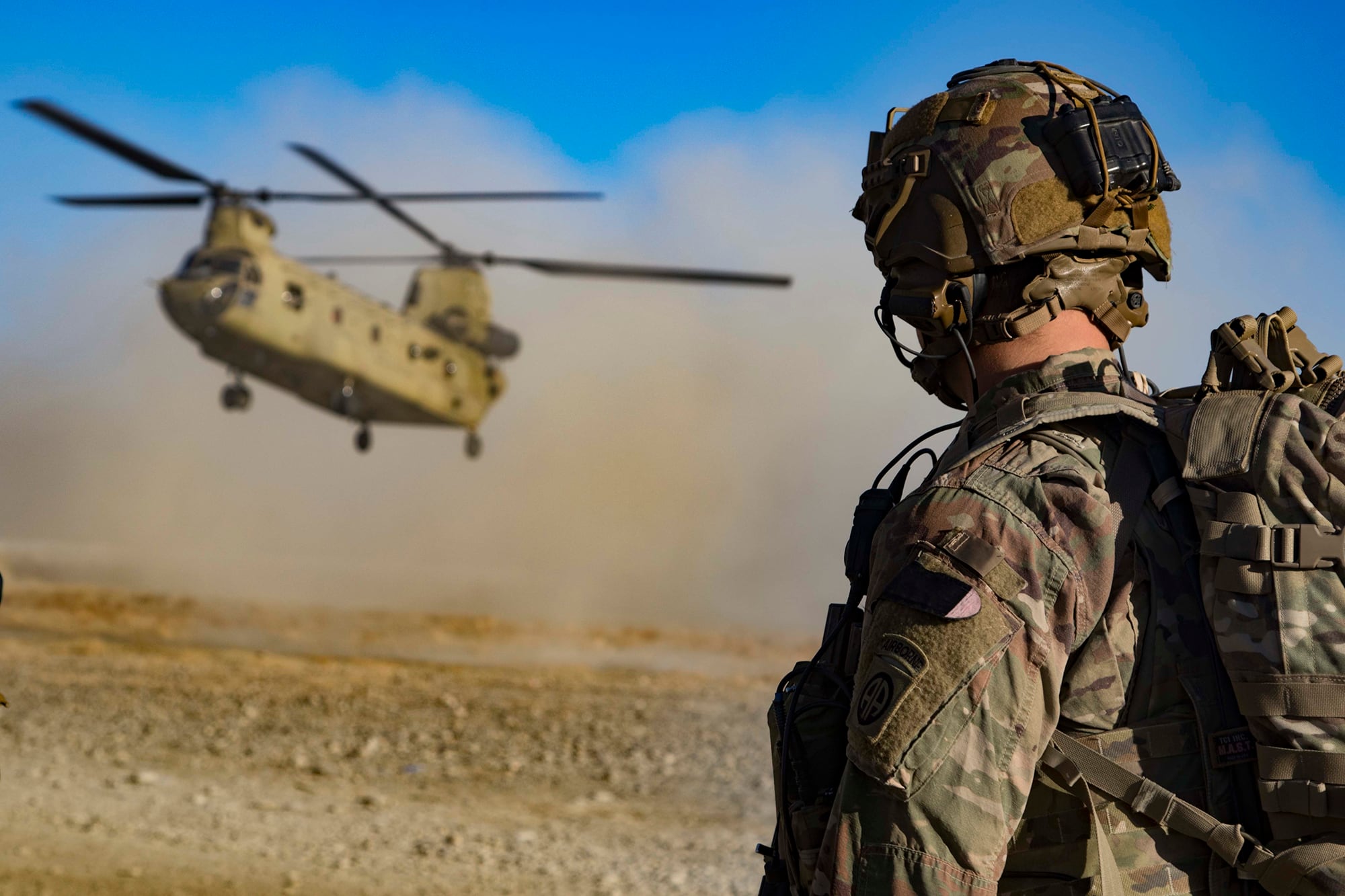Afghan special operations forces and commandos are conducting more partnered missions with their America allies, raising questions about the elite unit’s ability to hold the line should U.S. troops withdraw from the the nearly 18-year long.
A recent government watchdog report detailed that 43 percent of Afghan Special Security Forces’ operations were conducted independently in 2019. In 2018, the Afghan special operators conducted 55 percent of their missions independently.
The government watchdog report compared enabled operations, missions that include coalition enablers such as air support, and partnered missions where coalition troops partner with Afghan forces. Independent operations are conducted without coalition or U.S. assistance.
“ASSF ground operations data from the last two years show that U.S. and Coalition forces are increasingly partnering with, or assisting the ASSF with, their operations,” the report reads.
“Afghan special forces conducted fewer ground operations in the fourth quarter, lower than any other quarter in 2019, and only 31 percent of their operations were conducted without U.S. or Coalition assistance,” the report reads.
Afghan special operators launched a total of nearly 3,065 missions in 2019, according to the report.
It’s a worrying metric for Pentagon planners seeking to exit the Afghan quagmire. The Defense Department has oft highlighted Afghan commandos and special operators as the premiere force in Afghanistan.
RELATED

The ASSF “remain the most capable force in the ANDSF and continue to grow in their effectiveness,” a recent DoD report reads. The commando unit conducts the majority of offensive operations for the Afghan military.
The U.S. has come to rely on the elite unit for counterterrorism missions and to maintain sustained offensive military pressure on the Taliban and other militants in the country.
The government watchdog report described the elite Afghan units operations metrics as an “important success indicator” because the commando unit is the “primary offensive force in the” Afghan National Defense and Security Forces.
Afghan President Ashraf Ghani has invested much stock in the ASSF over the last several years. In 2016, Ghani pushed a four-year roadmap to double the size of the special operations force.
The Defense Department said in the watchdog report that the ASSF’s “growing size and capabilities are important not only for the ANDSF’s performance, but also for the United States to increase the effectiveness and efficiency of its small-footprint military campaign in Afghanistan.”
Over the last two years, the U.S. military has dropped the hammer on the Taliban upping military pressure and dropping nearly 15,000 munitions in an effort to convince the Taliban to end the war through negotiations.
According to U.S. Air Forces Central Command, U.S. aircraft dropped 7,423 munitions in 2019 — that’s the highest number of bombs released in nearly a decade.
In 2018, U.S. warplanes dropped 7,362 bombs — the second highest total in a year thus far since AFCENT began publishing the number of munitions released in Afghanistan.
The increased American military onslaught against the Taliban has translated into a higher operations tempo for Afghan forces.
The watchdog report said that in early 2019, Afghan special operators carried out 30 percent more operations compared to 2018. However, the total number of independent operations for 2018 and 2019 remained roughly the same.
A DoD report noted that sustained violence and casualties among Afghan forces was impacting attrition and “outpacing recruitment and retention.”
“Although the high OPTEMPO of 2019 has stretched the ANDSF, they have denied the Taliban the ability to accomplish their campaign objectives,” the DoD report reads.
The DoD report explained that ASSF independent operations were conducted to expand security around population centers and to secure key terrain.
“U.S. and Afghan forces conducted partnered and enabled operations throughout the country to increase military pressure on Taliban and ISIS-K leaders and networks,” the report reads.
Afghan special operations forces and commandos will be a necessary pillar for American troops to withdraw from Afghanistan.
President Donald Trump reiterated Tuesday in the annual State of the Union speech his desire to bring troops home from Afghanistan and end the wars in the Middle East.
RELATED

“In Afghanistan, the determination and valor of our warfighters has allowed us to make tremendous progress, and peace talks are underway,” he said. “I am not looking to kill hundreds of thousands of people in Afghanistan, many of them innocent. It is also not our function to serve other nations as a law enforcement agency.”
There are roughly 13,000 U.S. troops in Afghanistan. Secretary of Defense Mark Esper has said the Pentagon may reduce the American footprint in the country to 8,600 with or without a deal with the Taliban.
Peace talks with the Taliban are ongoing, but definitions over reduced violence and a cease-fire continue to bog down the talks. Secretary of State Mike Pompeo said he wants “demonstrable evidence” that the Taliban can carry through on their promise to reduce violence in the country, according to the Associated Press.
Shawn Snow is the senior reporter for Marine Corps Times and a Marine Corps veteran.
Leo covers Congress, Veterans Affairs and the White House for Military Times. He has covered Washington, D.C. since 2004, focusing on military personnel and veterans policies. His work has earned numerous honors, including a 2009 Polk award, a 2010 National Headliner Award, the IAVA Leadership in Journalism award and the VFW News Media award.
Joe Gould was the senior Pentagon reporter for Defense News, covering the intersection of national security policy, politics and the defense industry. He had previously served as Congress reporter.




